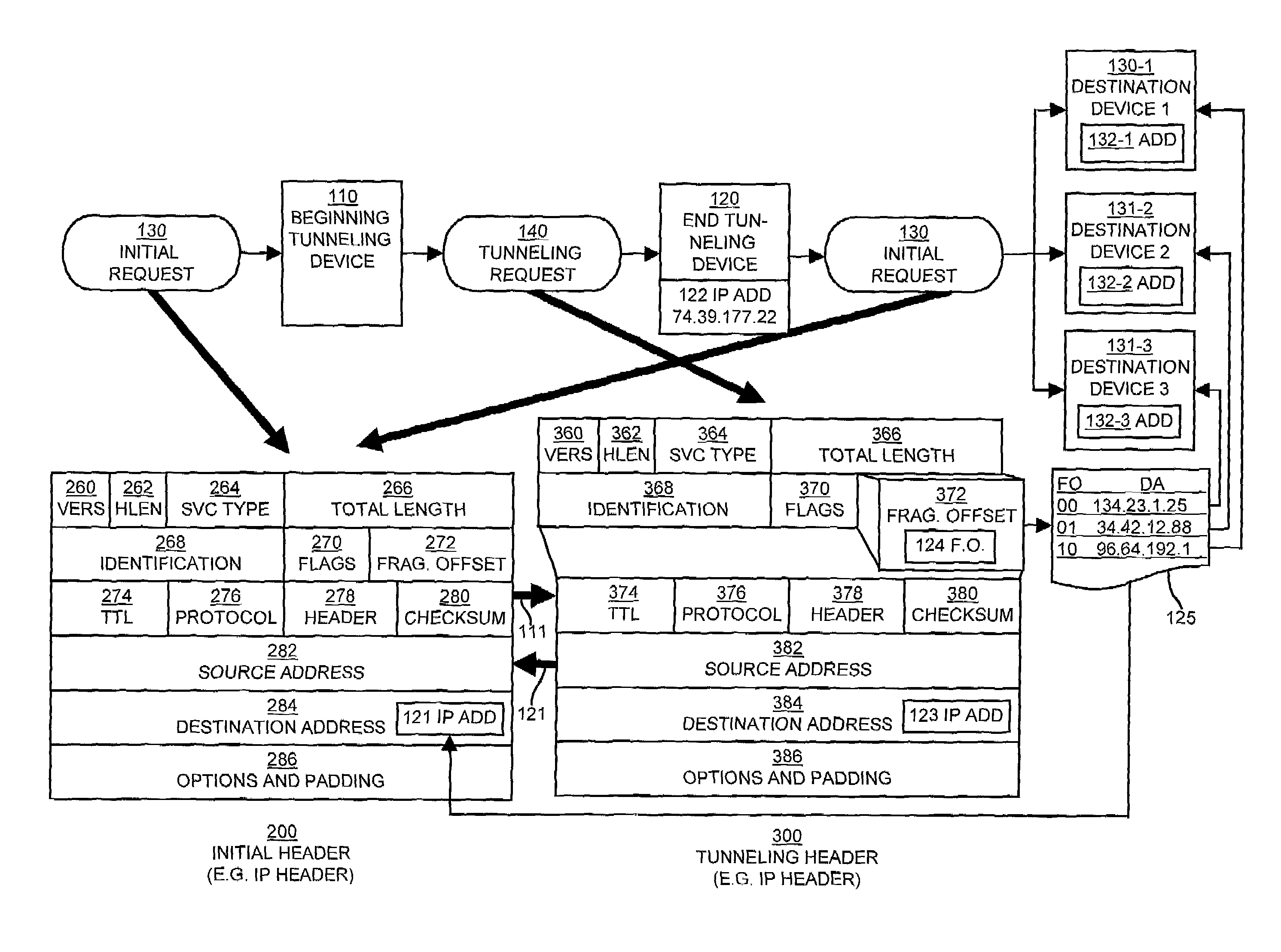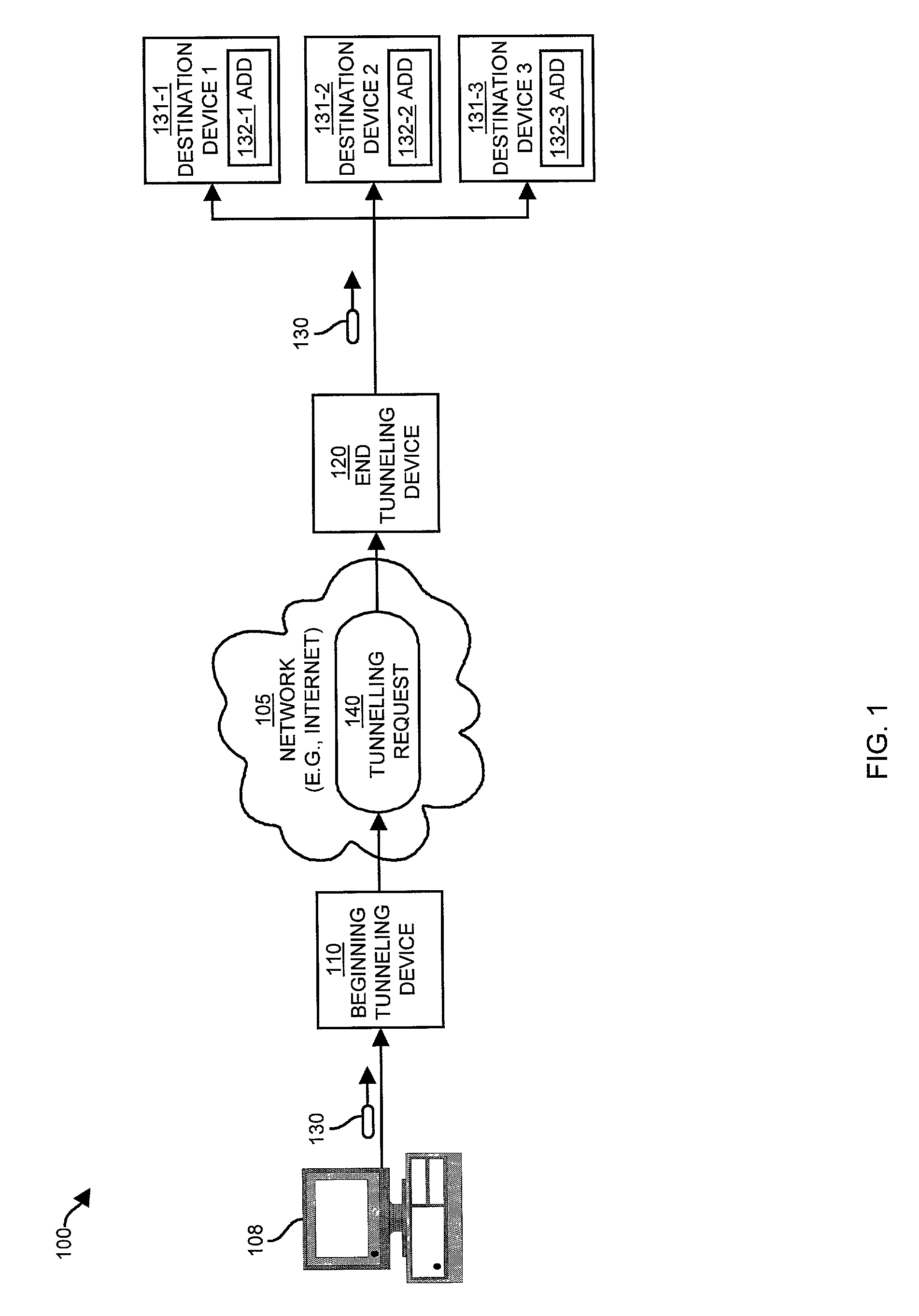Method and apparatus for tunneling information
a tunneling information and tunneling technology, applied in the field of tunneling information methods and equipment, can solve the problems of increased overhead, shortcoming of conventional tunneling methodologies, and inability to expand the capacity of existing equipment, and achieve the effect of minimising additional overhead
- Summary
- Abstract
- Description
- Claims
- Application Information
AI Technical Summary
Benefits of technology
Problems solved by technology
Method used
Image
Examples
Embodiment Construction
[0042]Embodiments of the invention are directed to techniques for identifying and transmitting tunneling requests, such as one or more packets by modifying the initial header of an initial request in order to change the initial request into a tunneling request. No creation or processing of additional headers or encapsulation of packets within other packets or headers is involved. In order to perform the tunneling, in one embodiment of the invention, a beginning tunneling device (e.g., a computer system, network device, switch, router, etc.) receives an initial request (e.g., a packet, communications message, etc.) from an originating device (e.g., a user computer or other network devices, etc.). Upon receipt of the initial request, the beginning tunneling device first identifies the initial request as a tunneling request, then modifies the initial header to create a tunneling header.
[0043]To do so, the beginning tunneling device replaces the IP protocol number indicating that the in...
PUM
 Login to View More
Login to View More Abstract
Description
Claims
Application Information
 Login to View More
Login to View More - R&D
- Intellectual Property
- Life Sciences
- Materials
- Tech Scout
- Unparalleled Data Quality
- Higher Quality Content
- 60% Fewer Hallucinations
Browse by: Latest US Patents, China's latest patents, Technical Efficacy Thesaurus, Application Domain, Technology Topic, Popular Technical Reports.
© 2025 PatSnap. All rights reserved.Legal|Privacy policy|Modern Slavery Act Transparency Statement|Sitemap|About US| Contact US: help@patsnap.com



